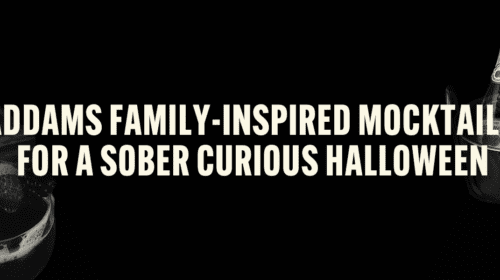Mixing two substances, known as polysubstance abuse, always carries greater risks than using either substance alone. The combination of alcohol and meth is particularly deadly, though it’s extremely common in social and party situations.
Alcohol use can be deadly on its own. Approximately 140,000 lives are lost each year to alcohol use according to the National Institutes of Health.[1] To make matters worse, about 2.5 million Americans also use meth, according to the Substance Abuse and Mental Health Services Administration (SAMHSA).[2] These groups can overlap, leading people to use meth and alcohol together – increasing their risk of adverse health effects.
Effects of Meth
Meth is a powerful central nervous system (CNS) stimulant that causes a powerful high, increased alertness, and a decreased appetite.[3] The euphoria from meth is intense but short-lived, leading people to binge repeatedly before experiencing a crash.
Using meth increases the release of dopamine in the brain, which affects the brain’s reward system. Increased dopamine levels fuel the desire for rewards, reinforcing meth use to recapture that feeling.[4]
The short-term effects of meth include:
- Increased alertness
- High energy
- Sleeplessness
- Rapid heart rate
- High blood pressure
- Increased body temperature
- Low appetite[5]
Effects of Alcohol
Alcohol is a normalized substance that’s used in social situations. The increased access and social acceptance lead to alcohol being abused, despite the dangers. Alcohol is a nervous system depressant – the opposite of the effects of meth – and causes effects like:
- Poor motor coordination
- Slowed reaction time
- Confusion
- Slurred speech
- Impaired judgment
- Memory loss
- Blurred vision
- Reduced inhibitions
- Nausea and vomiting
- Slowed breathing rates
- Low blood pressure
- Coma[6]
Why Do People Mix Meth and Alcohol?
Meth and alcohol have opposite effects, leading people to mistakenly believe that using both at the same time will increase the intensity of the high while alleviating the adverse effects.[7] For example, people may think drinking alcohol may help with the insomnia associated with meth use, while meth may relieve the sedative effects of alcohol and improve alertness.
People may also mix alcohol and meth as a simple way of improving their social interactions while under the influence. Social drug use and drinking alcohol often occur together, despite the risks.
The Risks of Mixing Meth and Alcohol
Using alcohol and meth together can have serious and potentially fatal consequences. Alcohol use can interfere with the way the body metabolizes meth, leading to higher concentrations in the bloodstream. When this happens, the stimulating effects of meth may be more pronounced, increasing the heart rate and blood pressure more than meth use on its own.[8]
Together, these substances also impair learning and judgment more than meth alone,[9] which can lead to poor decisions and consequences. For example, taking meth and alcohol can cause someone to drive intoxicated, believing themselves to be more sober than they are.
One of the biggest risks is alcohol poisoning, however. When people use meth with alcohol, it masks some of the sedative effects of alcohol. People may feel alert and sober, so they drink more than they would otherwise, which increases their risk of alcohol overdose.
Alcohol overdose – also known as alcohol poisoning – occurs when there’s an excessive amount of alcohol in the bloodstream, causing certain areas of the brain to shut down.[10] This can affect life-sustaining functions like heart rate, breathing, and temperature control.
The signs of alcohol poisoning may include:
- Confusion
- Unconsciousness
- Slowed breathing and heart rate
- Vomiting
- Clammy skin
- Extremely low body temperature
- Blue or pale skin
- Seizures[11]
An alcohol overdose is a medical emergency. The person experiencing alcohol poisoning shouldn’t be left to “sleep it off.” Blood alcohol continues to rise, even after they’ve stopped drinking. If the person slips out of consciousness, they can vomit and choke to death, since the high levels of alcohol disrupt the signals in the brain that influence the gag reflex.
If you suspect someone is overdosing on alcohol, call 911 immediately. Stay with them until emergency medical services arrive. If they vomit, roll them on their side to avoid choking.
Polysubstance Abuse Treatment
All substances carry risks, but mixing two deadly substances like meth and alcohol increases the risks considerably. If you or someone you love is unable to stop using alcohol and meth, it’s important to seek help. Every time these drugs are used, especially together, there’s a potential for death or serious health effects.
The first step in treating polysubstance abuse is medical detox. Alcohol withdrawal can be life-threatening on its own, and meth withdrawal can be intense and extremely uncomfortable. Medical detox helps to manage the symptoms of withdrawal to keep you as safe and comfortable as possible while the drugs clear your system.
After detox, you can transition into an inpatient or outpatient setting for more extensive addiction treatment. Addiction treatment plans are individualized, but you may attend family therapy, individual counseling, group counseling, mutual-support groups, or other therapies to address the underlying causes of addiction and develop the tools for long-term success.
Stop the Cycle of Meth and Alcohol Addiction
If you or a loved one is struggling with alcohol and meth addiction, Recovery Unplugged is here to offer the help you need. Contact us today to learn more about our addiction treatment programs and get on the path to recovery.

























